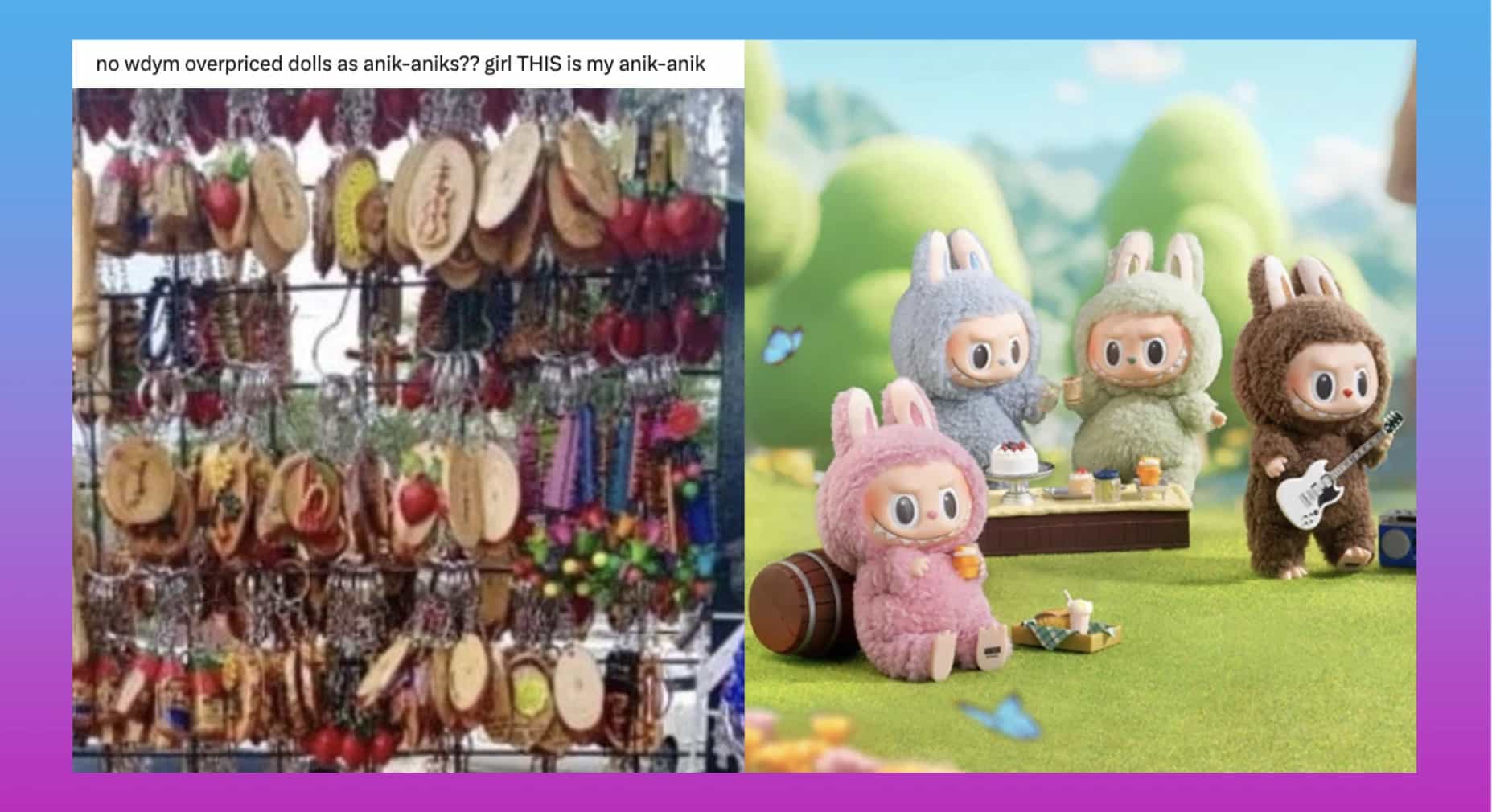Amidst all the craze about the famous Pop Mart’s “The Monster” series character Labubu, social media users have started to debate on whether the consumption of this doll is considered a simple collection of innocent “anik-anik” [knick knacks], or a glaring example of consumerism.
With the surge in consumption of the pointy-eared and mischievous-looking doll, most have labeled Labubu as a simple “anik-anik.” But what even is an “anik-anik” and why are internet users having a discourse on whether a P900 to P51,000 (depending on the size) doll is considered as one, or not?
“Anik-anik” is said to be an alternative spelling of the term “anek-anek,” which also stems from the term “anu-ano,” which translates to “all sorts of things.”
Filipinos have an inherent liking of maximalism, wherein it is culturally embedded for Filipinos to keep various items not just to decorate and fill spaces but also somehow to keep cherished and valued things that have significant memories to them.
However, some users of X (formerly known as Twitter) have called out some who have purchased Labubu and calling them “anik-anik.”
“[A]nik-anik being associated with hoarding expensive microtrends really does leave a bitter taste,” one X user said.
anik-anik being associated with hoarding expensive microtrends really does leave a bitter taste
— ciel ♱⭑🪽 (@ubemysweet) November 1, 2024
Another social media user said, “Fake anik aniks when real anik aniks are discarded stuff that are so personal to u that u refused to throw away while these Labubus are goods straight from the market which [yo]u can easily make profit/trade and they’re just overconsuming.”
“true anik-anik lovers ay may naitago pang magnum popsicle and packaging from 2013 because it was a luxury for us to be able to afford it during that time,” another social media user stated.

One X user also quote-tweeted a photo of a cart piled up with items from Pop Mart saying that, it can never be “anik-anik.”
“See how this can never be anik-anik bc you bought it all in one go, it’s not a pile of different sentimental items built over time. It’s a collection. You’re a collector. Call it what it is. Words mean things. Stop using words you don’t know the meaning of just to be quirky,” the social media user said.
no wdym overpriced dolls as anik-aniks?? girl THIS is my anik-anik https://t.co/nboNL4GHON pic.twitter.com/OxIJlDGKNC
— popverse #KikoBamAkbayan era 🤟🤙🌟🍉 (@theTEENstagram) November 1, 2024
see how this can never be anik-anik bc you bought it all in one go, it’s not a pile of different sentimental items built over time. it’s a collection. you’re a collector. call it what it is. words mean things. stop using words you don’t know the meaning of just to be quirky. https://t.co/DtrfaMCf9j
— wena (living j-hopely) 🍉 (@pochagogogow) November 2, 2024
anik anik ng mamayaman: popmart and other collectibles that cost 500 pesos and above
— vince (@droidhymns) November 1, 2024
fake anik anik girlies when REAL anik anik girlies come at them https://t.co/9sYIFElTaE pic.twitter.com/qf2g0m4FYd
— Anika 🇵🇭 (@xoxo__anika) November 1, 2024
before anik-aniks, girlies who keep “thank you notes” once lived. 🥹❤️🩹 pic.twitter.com/Pm5Lpo5WAY
— jia 🥢 (@icedyoonzino) November 2, 2024
But then, do we really have a specific criteria for things to be appropriately called “anik anik.” Does the Labubu doll embody the essence of “anik-anik,” or is it simply a product of fleeting consumer trends? What do you think?
Other POP! stories you might like:
[Commentary] Filipino internet users speak out in defense of ‘Healing Inner Child’ viral post
‘Throwing shade?’: Social media abuzz as Manila Mayor posts ‘Text Your Ex Day’ online
Electric cooperative company receives public scrutiny for alleged ‘gaslighting’ via FB post
Café in Cubao under fire for using ‘EJK-themed’ decorations for Halloween
Cyber security group issues warning about ‘social media poisoning’ amid Kristine calamity


